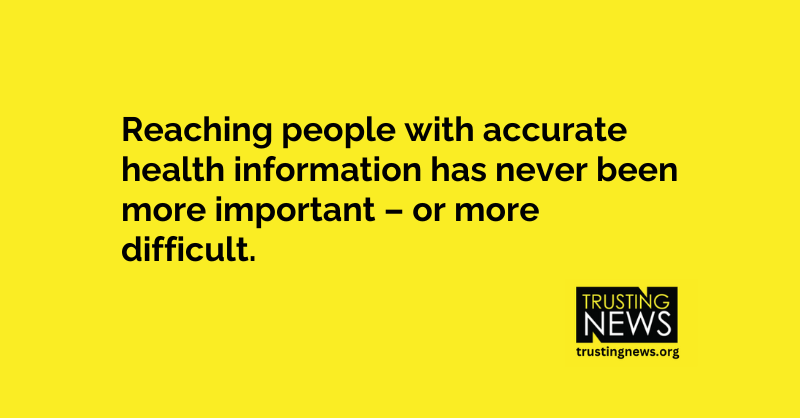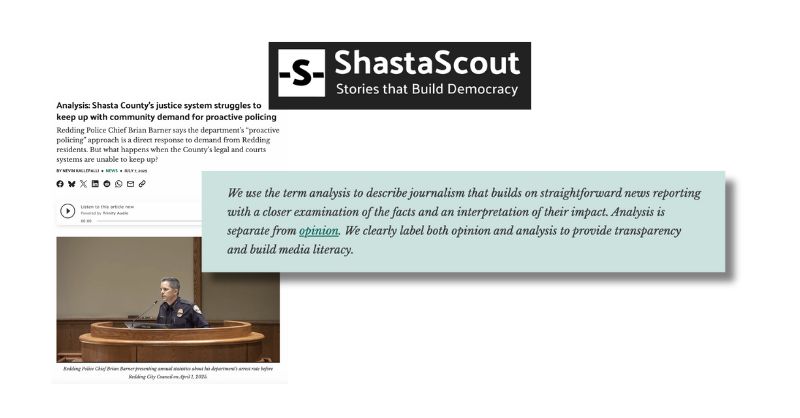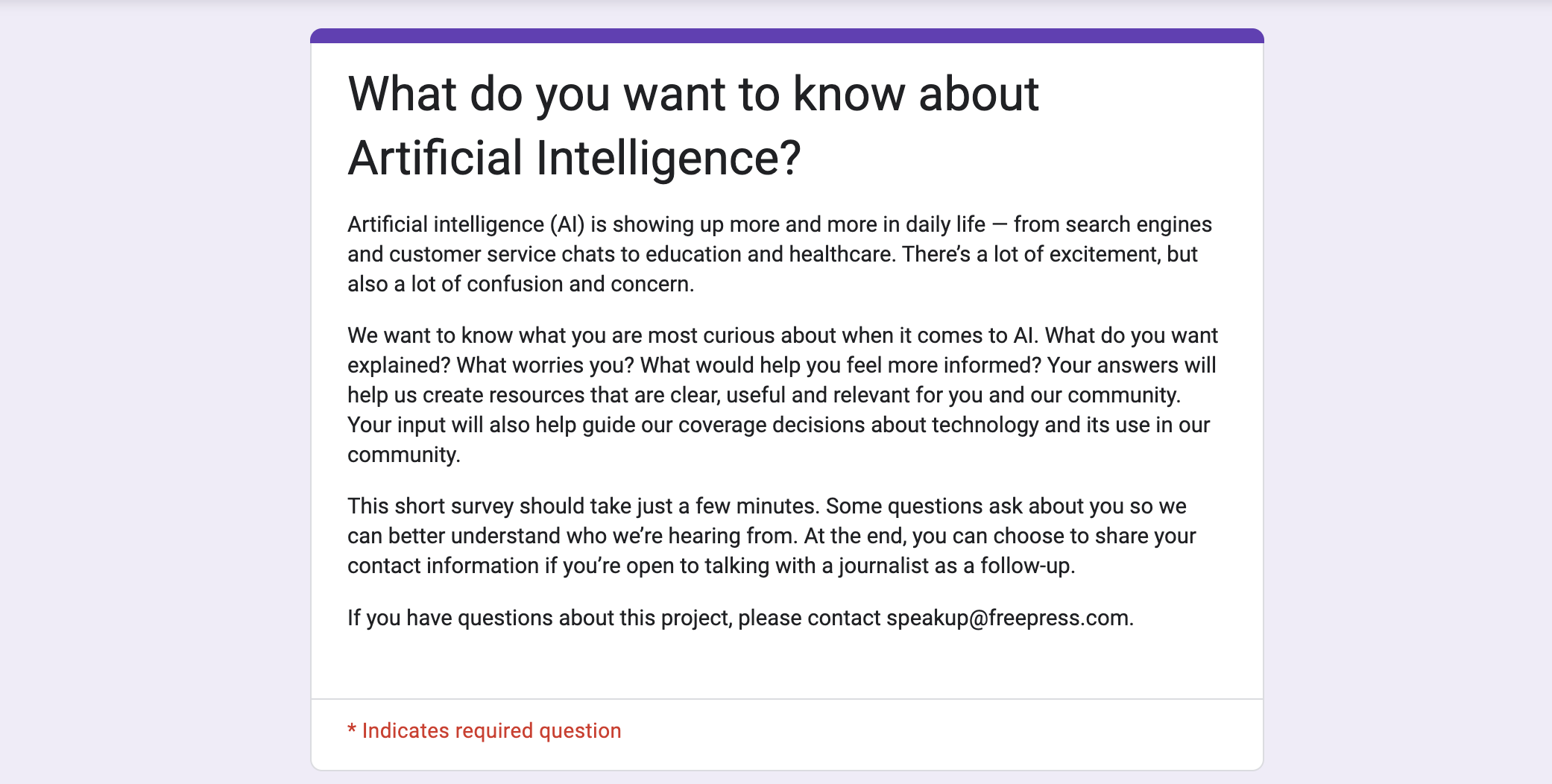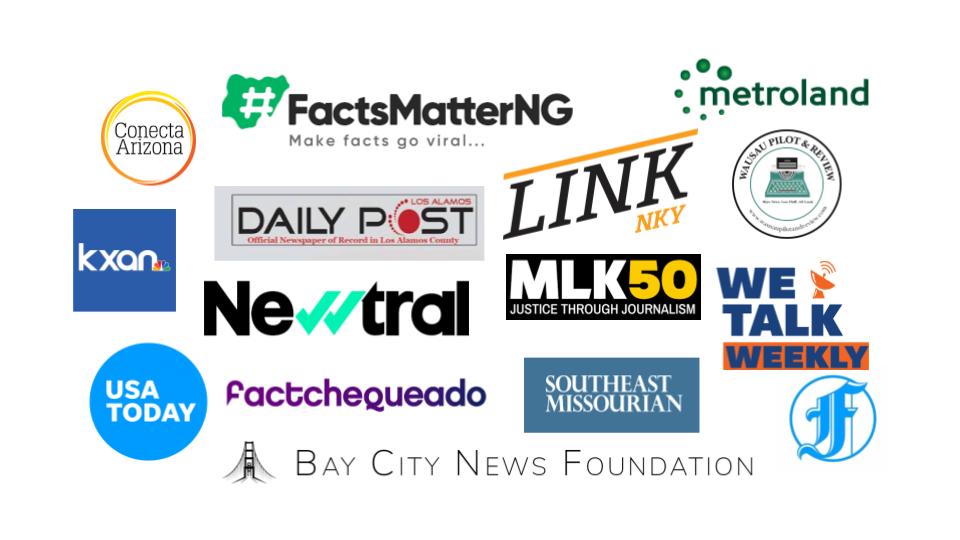
Health misinformation is widespread, so it’s crucial for journalists to build trust when reporting on health topics. Here are three ways to do that.
Three ways to build trust in a time of health misinformation
Want to get this Trust Tips newsletter in your inbox each Tuesday? Subscribe here.
Journalists and scientists would likely agree that reaching people with accurate, responsible health information has never been more important or more difficult.
How can we share accurate, science-based information in ways people will not only hear, but also believe? How can we cut through the noise of social media influencers and politicians without pushing people away? How can we cover misinformation effectively?
I explored these questions alongside journalist Tara Haelle, vaccine-confidence expert Karen Ernst and researcher Stefanie Friedhoff during a recent panel on health misinformation at the Association of Health Care Journalists conference, moderated by journalist Naseem Miller. While we don’t have all the answers, there are definitely strategies that can help our accurate, ethical health reporting reach more people.
Miller recently highlighted 12 tips for journalists to improve coverage of health reporting in a story for The Journalist’s Resource. I am highlighting three of those tips below that will help your coverage and also help you build trust with your audience.
Trust your audience with information. They can handle nuance.
This tip is crucial. Here’s what Miller wrote:
“…Rather than hiding uncertainty or nuance, be transparent about what’s still under investigation or debated. That shows respect for the audience’s ability to think critically and the openness helps strengthen trust and credibility, the panelists said. So, when you find that certain vaccines can have rare side effects, include them in your reporting and show the reader where that evidence comes from. ‘Acknowledge these types of things, and trust people that they’re able to handle the information,’ Friedhoff said.”
This really resonates with me because we know some people perceive journalists as part of an elite group. I see that reflected in the condescending way some journalists talk about their audiences and the assumptions we make about what people can or want to understand. Of course, we have to boil down complicated ideas. But, there’s a difference between making something accessible and oversimplifying it so much, we strip away the essential context people need to truly understand an issue.
Lead with empathy, not confrontation, to build trust.
If one of our goals is to be hearable by people who are skeptical, we need to remember that addressing misinformation requires trust, not just facts. Tone matters a lot while covering these issues.
Some examples Miller provides in her article:
Try not to be combative. “Phrases like ‘this is not true’ may sound like a challenge, she (Friedhoff) said, especially if the person is emotionally invested in the belief. Instead, use softer language that acknowledges concerns and builds rapport. The goal is to keep the door open for conversation rather than shutting it down.”
Focus on connection, not just content. “The one thing that we know from research is that relationships trump facts every time,” Friedhoff said.
Don’t focus stories on opinions. “Our conversations are too often focused on opinions and not on experience,” Friedhoff said. “That’s where the storytelling framework comes in. Once we start asking them about their experiences, entirely different stories emerge, and they allow us to go into some of their motivations.”
Meet people where they are
Miller wrote:
“Instead of insisting on scientific language or your preferred sources, look for ways to meet people on their turf. That might mean using terms they’re familiar with or addressing their concerns first before steering the conversation toward accurate information. It’s about compromise, without sacrificing truth.”
This advice also resonates with me because by doing this, I believe we are showing empathy for what the news consumer experience is like (overwhelming and hard) while also thinking about them first: How can we best reach our community members in a language they will understand?
Related: We wrote a few months ago about the importance of acknowledging people’s concerns without ridicule, inspired by Your Local Epidemiologist.
Another strategy from Miller: Try to link to sources your audience already trusts. This can help build bridges without endorsing misinformation.
“Haelle described using Fox News links to reach someone who wouldn’t trust mainstream or left-leaning sources. This doesn’t mean compromising on facts. It means recognizing the power of framing and source credibility. Presenting reliable information from a source the audience already trusts can lower their defenses and open their minds.”
Other tips from Miller and the panelists
Read the rest of the tips from panels in Miller’s article. A few more I’ll highlight here:
Think about the language you use. Even the term ‘misinformation’ can be problematic. The term ‘misinformation’ can be problematic in journalism because it often signals judgment rather than understanding. While journalists may use it to describe factually incorrect claims, many audience members see it as dismissive or accusatory, especially if they believe the information they’ve encountered is true.
Provide on-ramps to complex topics for audiences. Rather than diving straight into complex health topics, provide entry points, like simple explainers that answer questions like “What is measles?” or “How do vaccines work?”
Explain how science works, not just what it says. Explain how scientific inquiry works: What a hypothesis is, how studies are tested, and why evolving conclusions reflect a system that corrects itself. Special thanks to Miller and The Journalist’s Resource for allowing us to republish these tips from their article. To read more about all 12 tips, view the article.
At Trusting News, we learn how people decide what news to trust and turn that knowledge into actionable strategies for journalists. We train and empower journalists to take responsibility for demonstrating credibility and actively earning trust through transparency and engagement. Learn more about our work, vision and team. Subscribe to our Trust Tips newsletter. Follow us on Twitter and LinkedIn.
At Trusting News, we learn how people decide what news to trust and turn that knowledge into actionable strategies for journalists. We train and empower journalists to take responsibility for demonstrating credibility and actively earning trust through transparency and engagement. Learn more about our work, vision and team. Subscribe to our Trust Tips newsletter. Follow us on Twitter and LinkedIn.

Assistant director Lynn Walsh (she/her) is an Emmy award-winning journalist who has worked in investigative journalism at the national level and locally in California, Ohio, Texas and Florida. She is the former Ethics Chair for the Society of Professional Journalists and a past national president for the organization. Based in San Diego, Lynn is also an adjunct professor and freelance journalist. She can be reached at lynn@TrustingNews.org and on Twitter @lwalsh.



